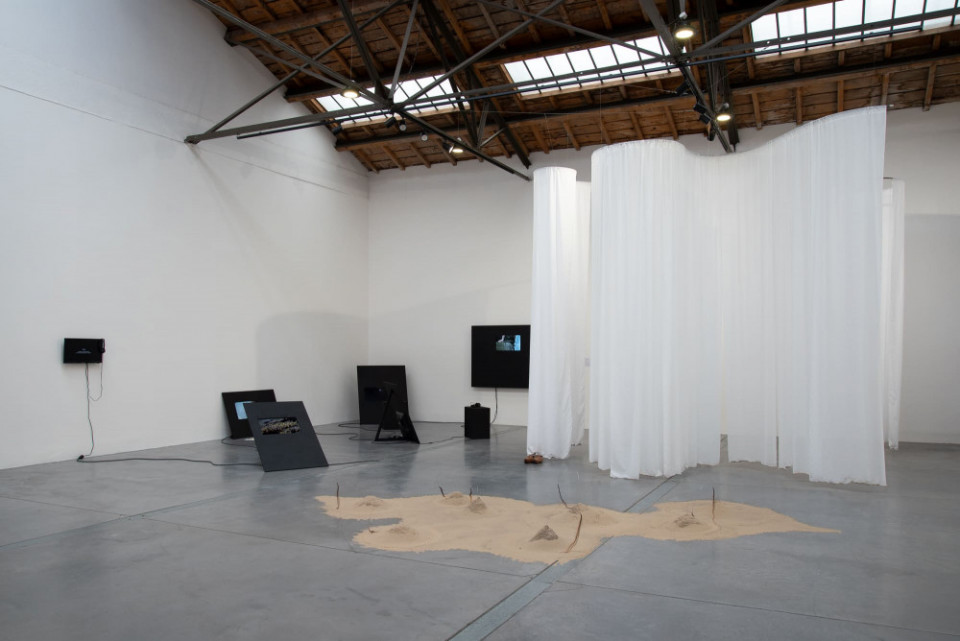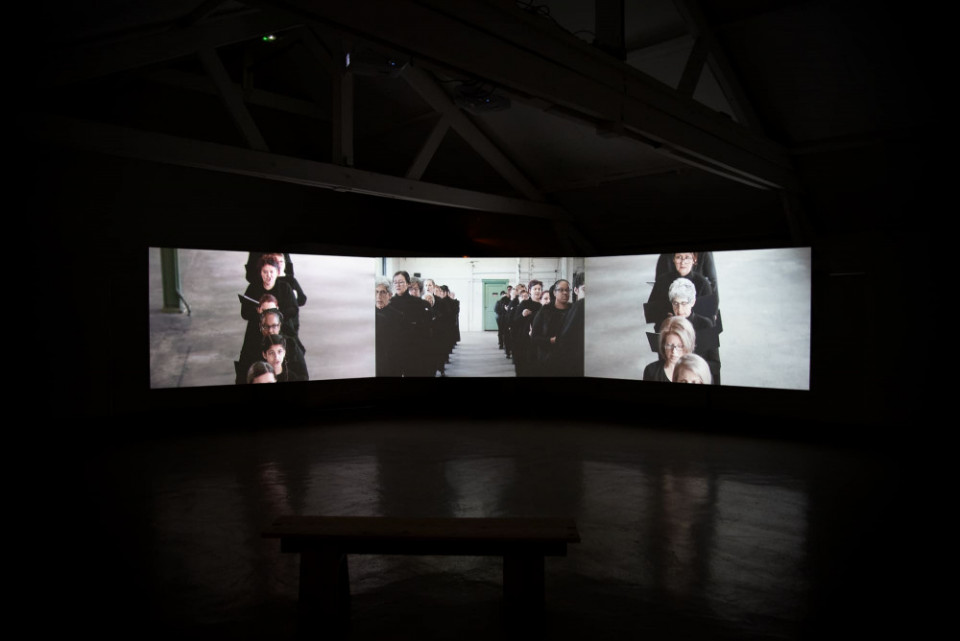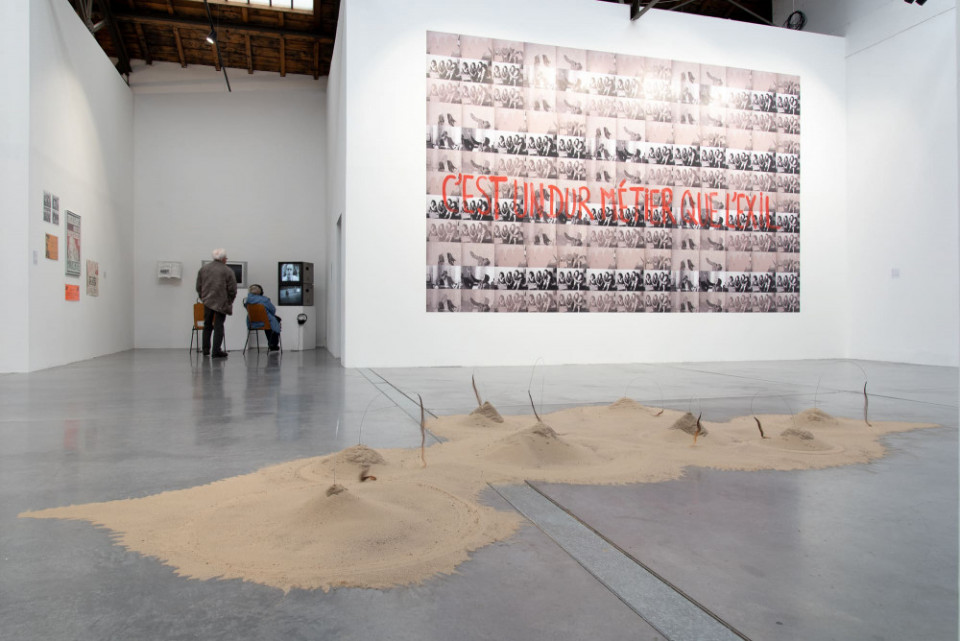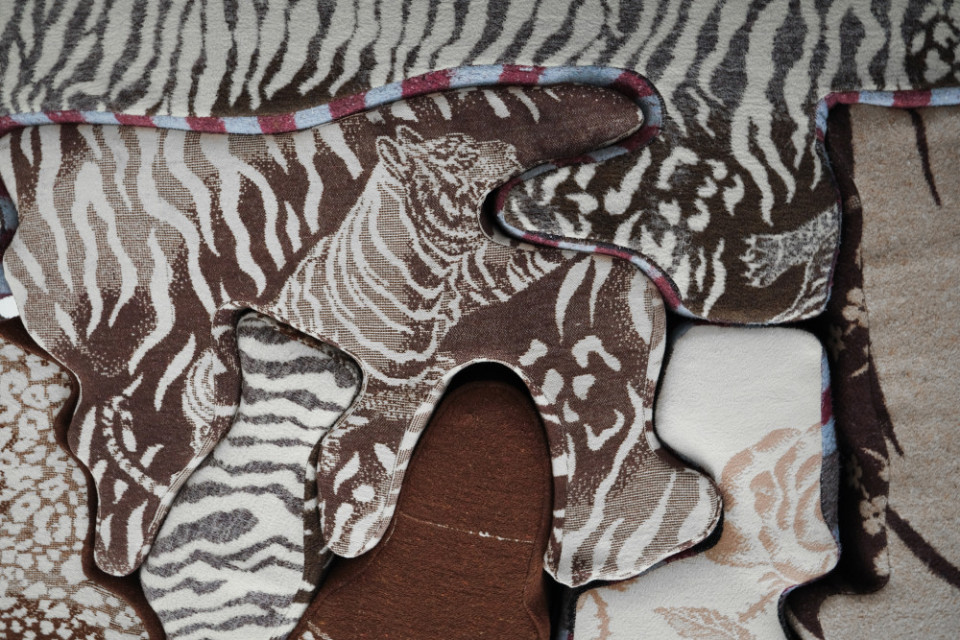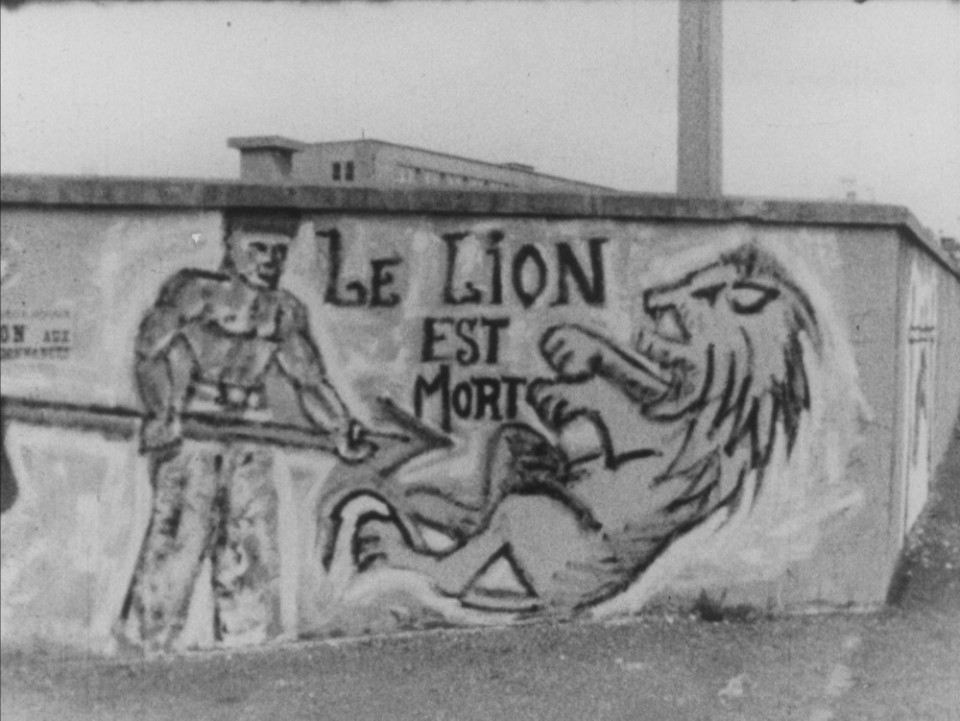Une exposition collective
Zones de (non)être
Exposition
With works by Tania Candiani, Nicolas Daubanes & Louisa Yousfi, Domènec, Armand Gatti, Laila Hida, Adelita Husni-Bey, Laura Molton, Groupe Medvedkine Sochaux, Maeva Totolehibe, Carole Roussopoulos, Erika Roux, María Ruido, and Nil Yalter.
Curators: Violeta Janeiro Alfageme and Adeline Lépine
“Each of us carried, one by one,
tired and uncontrollable dreams.
We fell into silence,
into orphaned solitude,
we abandoned ourselves
so that the world could be a better place.”
Meral Şimşek, excerpt from dream and reality
in Incir Karasi or Refugee Dreams, 2022.
The exhibition Zones de (non)être 1 began its reflection with the local labor history and traced back to the political demands of May 1968 in France. These demands called not only for improvements in working conditions, but also laid the foundations for a broader critique of forms of exclusion and social domination. Throughout the 1970s, these struggles expanded and resonated with other historically marginalized groups, such as women, who began to make visible their subordinate position, even within the labor movements themselves. Thus, the horizon of social transformation initiated by the working class broadened, integrating feminist, anti-racist, and anti-colonial demands that challenged not only economic exploitation but also structural inequalities across all areas of life.
The exhibition also adopts a critical reflection on the zones of exclusion or relegation of minority or invisibilized subjects within structures created by patriarchy, capitalism, and colonization. In dialogue with Gayatri Chakravorty Spivak’s question — “Can the subaltern speak? 2” —, Zones de (non)être interrogates the possibility of representing the emancipation of these groups without it being co-opted by hegemonic discourses. The works brought together here share a situated sensibility, sometimes taking the form of ethnographic research, sometimes of testimony. All question, within our contemporary society, who can produce knowledge and who has the right to speak, while daring “to raise the ever-urgent question of the legitimacy of the voices of the ‘dominated,’ of the necessity of hearing their voices and listening attentively, of their right to impose their own words […] it is also to grant them the right to speak their own language 3.”
Furthermore, the essential issue of preserving these memories also unites the works and practices gathered in Zones de (non)être. Personal experiences can once again be embodied, transmitted, shared, and then felt by those who receive them. The exhibition deliberately raises more questions than answers: What continuity exists between past labor struggles and today’s forms of social and professional precarity? In what ways does the discourse of progress conceal the structural tensions that continue to reproduce inequalities and forms of alienation? How can the activation of memories in the present encourage us to converge our personal struggles toward a collective revolution?
- In 1952, in the introduction to Peaux noires, masques blancs, Frantz Fanon defined the expression “Zone of non-being,” which gives the exhibition its title: “There is a zone of non-being, an extraordinarily sterile and arid region, an essentially stripped-down slope, from which an authentic emergence can begin. In the majority of cases, the Black man does not enjoy the benefit of this descent into real Hell.” For Fanon, capitalism was not only an economic matter. It was also a racial project. This racism is a hierarchy of superiority and inferiority, located on the line separating the human from the non-human. Those situated above this line are socially recognized as property-holders living in the zone of being. Below, the non-propertied remain in the zone of non-being. ↺
- Gayatri Chakravorty Spivak, “Can the subaltern speak?” in C. Nelson & L. Grossberg (Eds.), Marxism and the Interpretation of Culture (pp. 66–111). University of Illinois Press, 1988. Available in French as Les subalternes peuvent-elles parler ? at Éditions Amsterdam, 2020. ↺
- Stéphane Beaud and Michel Pialoux, Retour sur la condition ouvrière — Enquête aux usines Peugeot de Sochaux-Montbéliard, Éditions La Découverte, 2011. ↺
Infos utiles
The exhibition Zones de (non) être is presented in collaboration with the collections of the Musée du Temps, the Centre Audiovisuel Simone de Beauvoir, Iskra, La Parole Errante, the Trussardi Collection, and 49 Nord 6 Est – Frac Lorraine. Its organization has been made possible thanks to the Villa Médicis for the work of Nicolas Daubanes and Louisa Yousfi, and to Jeu de Paume for the work of Laila Hida. This project is supported by Acción Cultural Española (AC/E) for Violeta Janeiro Alfageme and Domènec.
The curators would like to extend special thanks to Alexandra and Geronimo Roussopoulos and Jean-Jacques Hocquard.
— Free admission
— Opening on Friday, September 26 at 6:30 pm
